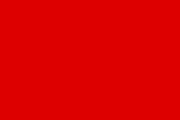Russian Social Democratic Labour Party (of Internationalists)
Russian Social Democratic Labour Party (of Internationalists) Российской социал-демократической рабочей партии (интернационалистов) | |
|---|---|
| Founded | July 1917 |
| Dissolved | October 1919 |
| Newspaper | Novaya Zhizn |
| Ideology | Socialism |
| Colours | Red |
| Party flag | |
 | |
The Russian Social Democratic Labour Party (of Internationalists) (Russian: Российской социал-демократической рабочей партии (интернационалистов)), initially known as the United Social Democrats-Internationalists, was a political party in Russia.
The programme of the group was largely similar to that of the Menshevik-Internationalists, and politically it placed itself between the Menshevik-Internationalists and the Bolsheviks.[1] They were critical of Bolshevik tactics but would remain supportive of the Soviet government.[1] They were a relatively small organization of leftist intellectuals, largely identified with its newspaper Novaya Zhizn ('New Life').[2][1] Whilst the group was quite small, Novaya Zhizn had a significant readership.[1] It was published by the well-known author Maxim Gorky, although Gorky broke with the party in July 1917.[2] Gorky had been the only prominent figure in the organization.[1]
In December 1917 Solomon Lozovsky was expelled from the Bolshevik Party, after which he joined the Russian Social Democratic Labour Party (of Internationalists) and became its main leader.[3][4] In March 1918 he became the party chairman.[5] He also edited the new party organ Proletarii ('Proletarian').[5]
In May 1918 the party underwent a split, with a minority group (who favoured closer relations with the Bolsheviks) broke away and formed their own group.[5] At the Second All Russian Trade Union Congress in January 1919, the party delegation supported the call for unions independent from the Communist Party.[4][6]
In April 1919, the minority that had split in 1918 reunited with the party.[5] The party adopted the name Russian Social Democratic Labour Party and took a more conciliatory approach towards the Bolsheviks.[5] The 4th congress of the party decided to dissolve the party and called on its membership to join the Communist Party.[4] In December 1919 Lozovsky was readmitted to the Communist Party.[3]
Soviet historiography labelled the party as "the far left of the petty bourgeoisie", arguing that the party had a contradictory position in calling for a socialist government whilst rejecting the notion of an armed uprising.[2]
References[edit]
- ^ a b c d e John Reed (28 August 2012). Ten Days that Shook the World. Courier Corporation. pp. xvii–xviii. ISBN 978-0-486-14976-9.
- ^ a b c Richard W. Harrison (9 April 2010). Architect of Soviet Victory in World War II: The Life and Theories of G.S. Isserson. McFarland. pp. 12–13. ISBN 978-0-7864-5667-3.
- ^ a b Lenin, V. I. Concerning the Expulsion from the Party of S. A. Lozovsky
- ^ a b c Leonard Schapiro (1956). The Origin of the Communist Autocracy: Political Opposition in the Soviet State, First Phase, 1917-1922. Published for the London School of Economics and Political Science University of London. Harvard University Press. p. 202.
- ^ a b c d e Reiner Tosstorff (8 September 2016). The Red International of Labour Unions (RILU) 1920 - 1937. BRILL. p. 831. ISBN 978-90-04-32557-9.
- ^ James Goodwin (2010). Confronting Dostoevsky's Demons: Anarchism and the Specter of Bakunin in Twentieth-century Russia. Peter Lang. pp. 230–231. ISBN 978-1-4331-0883-9.
